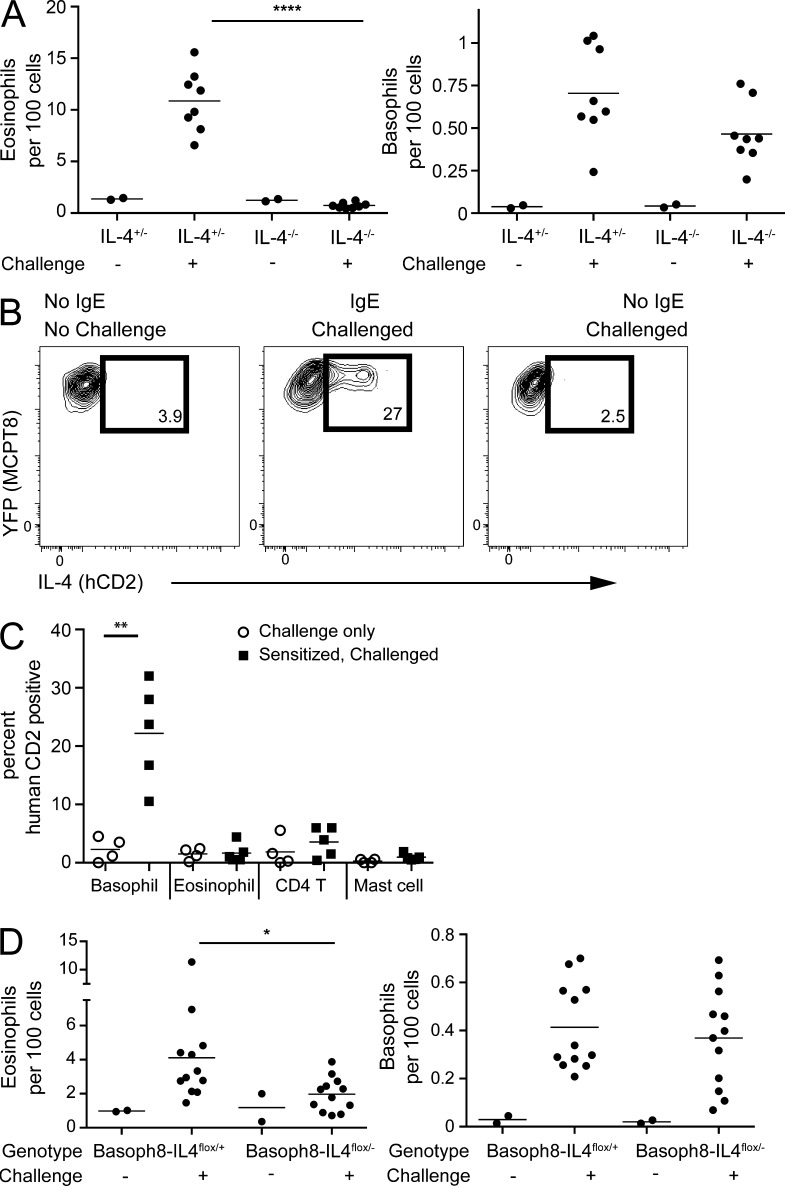Figure 3.
Basophil-derived IL-4 is required for eosinophilic inflammation. (A) IL-4−/− (KN2/KN2) and IL-4+/− mice on a C57BL/6 background were sensitized with anti-DNP IgE and challenged with topical application of DNFB 1 d later. 3 d after challenge, ear skin was assessed for eosinophil (left) and basophil (right) infiltration. The experiment is representative of three separate experiments with four to five mice per challenged group. The two mouse lines were bred independently to produce the indicated genotypes. (B) Basophils from Basoph8 × KN2 reporter mice were sensitized and challenged as in A. 1 d after challenge, basophils were examined for hCD2 expression at baseline (left), after IgE sensitization and challenge (middle), and after challenge alone (right). Gates were set against a KN2− control sensitized and challenged in parallel. (C) Pooled results from two separate experiments performed as in A and B with four to five mice per group depicting hCD2 expression on basophils (Basoph8+CD49b+FSCloSSClo), eosinophils (Siglec-F+CD11b+FSCloSSChi), CD4 T cells (CD4+FSCloSSClo), and mast cells (c-kithiCD44hiCD11a−, FSChiSSChi). Results from mice challenged with DNFB only (open circles) or challenge with DNFB after sensitization (closed squares) are shown. (D) Mice lacking IL-4 only in basophils (Basoph8–IL-4flox/−) and littermate controls (Basoph8–IL-4flox/+) were sensitized and challenged as in A. Eosinophil (left) and basophil (right) accumulation in the skin was assessed at day 3 after challenge. The data are pooled from two separate experiments with six mice per treatment group in aggregate. (A, C, and D) Horizontal bars denote mean. P-values were determined by ANOVA: *, P < 0.05; **, P < 0.01; ****, P < 0.0001.

